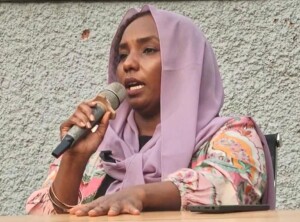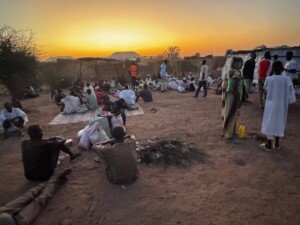Nine more cases of Rift Valley fever in Sudan’s Red Sea state
On Wednesday, villages in the area of Arbaat in El Ganeb locality in Red Sea state reported nine new cases suspected to be Rift Valley fever, bringing the total number of reported cases to 65.
 Widespread flooding across Sudan - like here in Um Kedada, has increased the risk of the spread of waterborne diseases (RD)
Widespread flooding across Sudan - like here in Um Kedada, has increased the risk of the spread of waterborne diseases (RD)
On Wednesday, villages in the area of Arbaat in El Ganeb locality in Red Sea state reported nine new cases suspected to be Rift Valley fever, bringing the total number of reported cases to 65.
Doctor Ahmed Dereir told Radio Dabanga that the new patients were hospitalised at El Tagadum Hospital in nearby Port Sudan.
He explained that the Emergency Chamber formed by the governor is in the process of establishing an isolation centre, either at the El Tagadum Hospital, or in the area of Tukeili, north of Port Sudan.
He added that the Chamber began to attract financial, logistical, and in-kind support for the infected and affected people of the region.
Cholera
In El Gezira, Rasheed Sid Ahmed, director of the General Directorate of Health Emergency and Epidemic Control in El Gezira, announced nine cases of watery diarrhoea, which is often a symptom of cholera, however five of these tested negative for cholera by the National Laboratory of Public Health.
He said that his administration has put in place a number of precautionary interventions to prevent the emergence of any epidemic cases through the implementation of preventive activities, campaigns of environmental sanitation and health promotion, and distribution of watery diarrhoea beds for isolation rooms in addition to the implementation of a number of campaigns to eradicate malaria in the state.
Kassala
In eastern Sudan, the residents of Wad El Helew in Kassala have renewed their demand for immediate evacuation, because the area is not suitable for human habitation after 20 children drowned in the lake of the Atbara and Setit dam complex.
Residents from the area told Radio Dabanga that the area suffers from serious environmental impacts due to the flooding of large parts of the residential districts populated by displaced people, latrines, and even cemeteries by dam water.
They pointed to the dense breeding of flies, mosquitoes, other insects, and the appearance of snakes.
They called for remedial solutions by constructing a barrier fence between the lake and the area, provision of drinking water, appointing an administrative director for the Wad El Helew Rural Hospital, provision of doctors, organising environmental sanitation and mist spraying campaigns and addressing the education problems.
Follow #CholeraInSudan, #ألكوليرا_السودان
Radio Dabanga’s editorial independence means that we can continue to provide factual updates about political developments to Sudanese and international actors, educate people about how to avoid outbreaks of infectious diseases, and provide a window to the world for those in all corners of Sudan. Support Radio Dabanga for as little as €2.50, the equivalent of a cup of coffee.












 and then
and then